Flexible couplings are one of the major types of couplings. They find use to connect two shafts, end-to-end in the same line to transmit power that is torque from one shaft to another, thereby causing both to rotate in unison, at the same rpm. The other purpose is to compensate for small amounts of misalignment and random movement between the two shafts. Several factors should always be taken into consideration when looking to specify flexible couplings.
These are torsional stiffness, backlash, torque, life, and attachment system. All of these have bearing on coupling selection. Specific details vary depending on the different types and their functions. In this article, we review the different types of flexible coupling in all aspects. Follow this new blog in Linquip to find out more about these types of couplings.
What Are The Different Types Of Flexible Coupling?
Most Flexible couplings are characterized as belonging to one of four main categories:
- Mechanical Flexible Couplings
- Elastomeric Couplings
- Metallic Membrane Couplings
- Miscellaneous Couplings
-
Mechanical Flexible Couplings
The mechanical flexible coupling generally obtains its flexibility from loose-fitting parts by rolling, sliding, or from both with some flexure of material. Flexible mechanical couplings provide a flexible or movable connection that accommodates misalignment between the shafts. This flexible feature reduces the forces or loads caused by the reaction to the misalignment. The mechanical nature of these types of flexible coupling allows for nearly unlimited horsepower and torque capabilities.
They maintain high torsional rigidity and allow a considerable degree of angular misalignment; however, they are not maintenance-free and require occasional lubrication unless one moving part is made of a material that supplies its own lubrication needs. Several different types of mechanical flexible couplings are as follow:
Gear Couplings
A common type of mechanical flexible coupling is gear coupling. Each coupling consists of two hubs with crowned external gear teeth. The hubs mesh with two internally splined flanged sleeves that are bolted together. They are called gears as a result of the generally huge size of the teeth. These couplings are commonly constrained to precise misalignments of 4° to 5°.
The gear coupling provides good torque characteristics. Gear couplings transmit the highest amount of torque and the highest amount of torque in the smallest diameter of any flexible coupling. Gear couplings require periodic lubrication depending on the application. These couplings have a service life of 3 to 5 years and in some cases, they can last for decades.
- High torque density
- All types of misalignment (angular, parallel, axial)
- High torque at high speeds
- Sensitive to lubrication failures
Application: Metal industry such as steel or wire mills, large industrial machines such as pumps, blowers, compressors, mixers, etc.
Grid Couplings
Grid couplings are multi-piece mechanical couplings used to transmit torque and rotation between shafts in mechanical power transmission assemblies. Grid couplings are comprised of two radially slotted hubs, a grid spring element, and a split cover kit. These types of flexible coupling are a popular option where both high torque levels and dampening requirements exist.
Grid couplings have a unique ability to reduces vibration by as much as 30%, and cushions shock loads to safeguard driving and driven power transmission equipment. They are available with either a horizontal or vertical split cover design. Grid couplings transmit torque and accommodate angular, parallel, and axial misalignment from one hub to the other through the rocking and sliding of a tapered grid in the mating hub slots.
- Interchangeable components
- High power density
- Relatively straightforward
- Simple installing
- Good resistance to environmental conditions
- Available for both inch and metric bores
- Not maintenance-free
- Require periodic lubrication
Application: Motors, pumps, reducers, conveyors, etc
Roller Chain Couplings
Roller Chain type couplings consist of two radially sprocketed hubs that engage a strand of double pitch roller chain. These couplings find a use for low to moderate torque and speed applications. The meshing of the sprocket teeth and chain transmits torque and the associated clearances accommodate angular parallel, and axial misalignment. These couplings are also able to accommodate up to 2 degrees of misalignment. They have flanges that are linked with duplex roller chains, giving them a high level of strength. Roller chain couplings are considered an economical way to transmit power between shafts.
- High levels of torque
- Requires frequent lubrication
- Not suitable where slip and precise motion is required
- Not affected by temperature and environmental conditions
- Easy to install
Application: Transportation industry, woodworking machinery, agricultural machinery, oil well drilling rigs, building construction, material handling equipment, lifting load
Slider Block Couplings (Oldham’s)
Oldham’s couplings consist of three discs, one coupled to the input, one coupled to the output, and a middle disc that is trapped by 90° displaced grooves between the tongue and groove. These couplings can accommodate lateral shaft misalignments up to 10% of nominal shaft diameters and up to 3 angular misalignments. Some manufacturers claim an ability to tolerate up to 5-degree angular misalignment through the use of cylindrical, rather than rectangular, sliders. Lubrication is a problem but can be overcome by choosing a wear-resistant plastic or an elastomer in place of steel or bronze floating members.
- No velocity variation as with universal joints
- High lateral misalignments possible
- High torque capacity
- Oil resistance and electrical insulation
- Suitable for small transmission torque occasions and connecting two coaxial transmission shafts
- Sliders Can be chosen with different materials
- Requires periodic lubrication due to relative sliding motion unless nylon or rubber construction is employed.
- Possible loss of loose members during disassembly
Application: Robotics, printers, copy machines
Metallic Beam Couplings
Beam couplings are one-piece metal beam cylinders with spiral slots that are cut to form a spring-like flexing portion. Beams are shaped to allow torque transmission in either direction. They are considered miniature and used in small-sized equipment applications where and easy installation is important. The beam couplings are classified into two series: helical beam coupling and parallel slit coupling.
These couplings can accommodate parallel misalignments up to 0.025 inches and angular misalignments up to 7 degrees. They are used primarily for motion control applications where torques are typically below 100 inch-lbs. Zero backlash designs available ensure positioning accuracy between driving and driven shafts. These types of flexible coupling generally feature excellent flexibility and a lower price, as well as zero need for maintenance.
- Good misalignment capabilities
- No need for lubrication
- Torsional stiffness for accuracy
- Strong for carrying torque loads
- Not suited for extreme operating environments with extreme temperatures and harsh chemicals
- Identical clockwise and counterclockwise rotation characteristic
Application: CT scan, laser marking device, confectionery equipment, automatic rotation stage, matching box for RF power, 3D printer, food processing equipment, index table, encoders, tachometers, and other instrumentations
Bellows Couplings
Bellows couplings are single-piece flexible shaft connectors that are used to couple driving and driven shafts in mechanical power transmission assemblies. They consist of two hubs connected by a flexible bellows section. Typical bellows couplings tolerate angular misalignment of 1° to 2° and parallel misalignment from 0.01 to 0.02 in. Bellows couplings are known for their exceptional torsional rigidity to accurately transmit velocity, angular position, and torque.
They are used where precise rotation, high speeds, and dynamic motion must be transmitted. They exhibit zero-backlash and a high level of torsional stiffness, offering distinct performance advantages. Unlike other mechanical flexible shaft couplings, these generally need no lubrication.
Bellows couplings are often selected in place of low-cost jaw couplings and disc couplings by engineers looking to benefit from their well-documented performance advantages. It is also used in some heavy industry applications, where its ability to accommodate axial thermal growth makes it useful for installations with large temperature swings.
- Able to run at speeds up to 12,000 to 32,000 rpm
- Offers high rigidity
- Suitable for sensitive motion-control applications
- Capable of handling high accelerations and dynamic motions
- Withstands high speed and thermal growth
- Low tolerance for misalignment
Application: Bar feeder encoder, laser engraving machine, grinding machine, linear and ball screw actuators, robots, step motors, light-duty pumps, tube production machine, motor test bench, laser cutting machines, radars, etc.
Universal Coupling
The universal couplings are mechanical joints used for connecting two rotating shafts or rods whose axes are inclined at an angle to each other. They consist of a pair of hinges or fork shapes yokes oriented at 90° to one another and connected by a cross shaft. The universal coupling is also known as a Universal joint, U-joint, Cardon Joint, and Hooke’s joint.
They compensate for the angular misalignment and allows the shafts freedom of movement in any direction while transmitting rotary motion. These couplings operate at 250 rpm with an operating angle of 10°. The universal joint is mainly used for the lengthy shaft linings supported by bearings. They are used to transmit motion, power, or both. Universal joints can also be used in series to eliminate velocity fluctuations, to connect offset (non-intersecting) shafts, or both.
- Large angular displacements are possible
- High torsional stiffness
- High torque capacity
- Negligible backlash
- Corrosion resistance
- Capability for high-speed operation
- Velocity and acceleration fluctuation increases with the operating angle.
- Shafts must lie in precisely the same plane
Application: Automobiles, aircraft applications, driveshafts, stone crushers, control mechanisms, belt conveyors, metal forming machinery, control mechanisms, electronics, instrumentation, medical and optical devices, ordnance, radio, sewing machines, textile machinery, and tool drives.
-
Elastomeric Flexible Couplings
These types of flexible coupling use a resilient material to transmit torque between two metallic hubs. Elastomeric couplings obtain their flexibility from stretching or compressing a resilient material such as rubber, and plastic. Some sliding or rolling may take place, but it is usually minimal.
The design of elastomeric couplings means that the elastic material is meant to wear out before any metal components. This not only saves time and money on maintenance but also means that the couplings do not require lubrication. A few advantages of this coupling are the high vibration dampening, shock absorption abilities, and toleration of a high degree of misalignment. They are also inexpensive and of lighter weight than mechanical couplings. The elastomeric element is sufficiently resistant to fatigue failure to provide an acceptable life compared to the cost of the coupling.
Exposing elastomeric couplings to high temperatures and UV light will reduce the coupling’s lifecycle. Due to the limitations of the flexible element, this type of coupling is used up to 37 kW and 3600 rpm.
Popular elastomeric couplings are as follows:
- Tire Coupling
- Jaw Coupling
- Pin and bushing Coupling
- Torsional Coupling
Tire Couplings
Tire-type couplings resemble the tires on a car. These couplings consist of two flanged hubs equipped with clamping plates, which grip the coupling’s hollow, ring-shaped element, by its inner rims. Tire coupling elements are rubber or polyurethane derivative elastomers with layers of cord, such as nylon, vulcanized into the tire shape. The coupling transmits torque through the friction of the clamp applied to the inner rims of the tire and the shearing of the element.
When the coupling fails, usually only the elastomeric part is replaced. Axial forces on the shaft caused by centrifugal forces working on the elastomer, restrict the speed of these couplings. Additionally, their bulky size limits what applications they could be applied to, although there is a variant with the tire inverted to reduce the coupling’s size.
- High misalignment capacity
- Easy assembly w/o moving hubs or connected equipment
- Wide range of torque capacity
- Easy installation
- Virtually maintenance-free
- Can accommodate angular, parallel, and axial misalignment
Application: Centrifugal compressors and pumps, machine tools, metal presses, mills, winches, and fans
Jaw Couplings
The jaw coupling or Spider coupling is a general, all-purpose industrial power transmission device. Jaw coupling is a material flexing coupling that transmits torque through the compression of an elastomeric spider insert placed between two intermeshing jaws. These couplings have two hubs with projecting jaws that mate with a one-piece elastomeric spider insert. For higher power applications, individual load cushions can be substituted for the spider. Torsional stiffness and torque capacity vary with the number, width, and shape of the jaws.
They operate in a range of temperatures, handle angular misalignment and the accompanying reactionary loads, resist chemicals, and have good speed and dampening capabilities. They are not extremely tolerant of misalignment as compared with other types of flexible coupling. The design of the jaw coupling is considered to be fail-safe, which could be a positive or a negative factor, depending on the application.
- Useful in high acceleration/deceleration motion control applications
- Electrically isolates the motor from the driven equipment
- Continues driving upon loss of the flexible element
Application: Conveyors, blowers, mixers, winders, compression pumps, propeller pumps, printing presses, shredders, excavators, stone crushers, hammer mills, welding machines, etc
Pin And Bushing Couplings
They are simple types of flexible coupling with two flanges bolted with the help bolt and nuts covered by a bush made up of rubber. Pin and bushing couplings consist of two hubs that can be made of different materials and are fitted with pins where rubber bushes are attached. Relative movement is accommodated by the compression of steel-bonded bushings. This type of coupling can handle misalignment of 0.5 mm laterally and 1.5° angular misalignment.
These couplings are mainly used as flexible links in applications where reliable link transfer is required under severe operating conditions. Because of their simple design, these are less expensive. They are widely applied to hoisting applications.
- More radial space is required compared to other couplings
- Easy to assemble & disassemble
Application: Fans, line shafting, alternators, pulp grinders, shakers, rotary dryers, wire mills, cement mills, pulverizes, cranes, mechanical shovels and dredges, winding gears and drums, prolonged and reversing drives
Torsional couplings
Torsional couplings are mostly to accommodate the torsional vibration. Most of these are rubber coupling which can dampen the vibrations moving from one shaft to the other and also accommodate the misalignments. Spring torsional couplings are available as torsional couplings.
The goal of torsional coupling is to tune the system above or below its natural frequencies. Both torsionally soft (incorporating soft rubber) and torsionally hard (often incorporating hard plastics) are available to tune the system. These are very stiff couplings designed to shift critical speeds well above the operating range.
Torsional couplings are made to adapt to shafts, flywheels, or universal joints.
- Low weight, low moment of inertia
- Short profile for tight engine housing, or shaft-to-shaft requirements
- Easily assembled, no special bands, tools, or time-consuming assembly procedures
- Oil, heat, and corrosion-resistant elements
- Fail-safe operation
Applications: Diesel engine generators, marine applications, crawler tractors, manlifts, compactors, skid steer loaders, excavators, and lift trucks
-
Metallic Membrane Couplings
Metallic membrane couplings rely on the flexure of metallic elements to accommodate misalignment and axial movement in shafts. These flexible couplings obtain flexibility through the bending of a membrane within the coupling. They have been around longer than the other three major types of couplings. These couplings require low maintenance and no lubrication, however, they may be more expensive than mechanical flexible couplings.
Metallic membrane couplings are somewhat expensive flexible couplings that, do not usually permit offset misalignment. These types of flexible coupling obtain their flexibility from the flexing of thin metallic, disc, or diaphragms. Classified as metallic membrane couplings, disc, and diaphragm couplings transmit torque and accommodate the slight misalignment anticipated between most equipment shafts.
Disc Couplings
The disc couplings have a thin sheet of discs laminated as the main part of the coupling for the flexibility to accommodate the misalignments. They consist of two hubs on each side and a spacer as a center member joined by the discs on both sides. The disc coupling’s principle of operation has the torque transmitted through flexing disc elements. It operates through tension and compression of chorded segments on a common bolt circle bolted alternately between the drive and driven side. A single-disc pack can accommodate angular and axial misalignment. Two-disc packs are needed to accommodate parallel misalignment.
- A true limited end float design
- A zero-backlash design
- High-speed rating and balance
- Finds use on fractional to 100,000 hp drives
Application: Hydrostatic application (Gearbox to hydraulic pump), turbomachinery, blower, compressor, mixer, servo motor applications, stepper motors, high-speed machine tools, semiconductor manufacturing equipment, actuator, surface chip mounting, and packaging machine
Diaphragm Couplings
Diaphragm couplings also use thin sheets as a flexible element like disc coupling. These couplings handle misalignment through the use of a single or a series of flexing metal plates or diaphragms in parallel for the flexible members. It transmits torque from the outside diameter of a flexible plate to the inside diameter, across the spool, and then from inside to outside diameter.
The outer diameter side of the diaphragm will be bolted with the hub and the inner side diameter portion of the diaphragm disc will be fitted into the slots of the spool portion also known as a spacer. On the other end of the spool will be again joined by a diaphragm disc with a hub. Diaphragm couplings can accommodate all three misalignments. It can accommodate more range of misalignment axially.
Diaphragm couplings were originally introduced to service very high speed, high horsepower applications in the petrochemical industry and have since progressed to other extreme applications such as helicopter drives. Diaphragm couplings are known for their large outside diameters, and, generally, very high cost. Diaphragm couplings are generally sold as custom solutions, and there are a wide variety of options to consider.
- Used in high torque, high-speed applications
- Finds use been used from fractional to 100,000 hp drives
Application: Turbomachinery, high power water pump, chemical pump, fan, compressor, hydraulic machinery, petroleum machinery, printing machinery, textile machinery, chemical machinery, mining machinery, metallurgical machinery, aviation, and high-speed power transmission system of ships
-
Miscellaneous Couplings
These types of flexible coupling obtain their flexibility from a combination of the mechanisms described above or through a unique mechanism like Spring and Schmidt couplings. Many of these designs require lubrication.
Spring Couplings
Consist of one or more square-wire springs that are concentrically wound and connected to hubs at each end of the spring. They are available in standard and miniature sizes and different lengths. The spring coupling can have many different hubs or flanges fitted to the ends and are available in. Spring couplings have been a part of powertrains for more than 80 years.
- Multistage stiffness for optimized system tuning
- Lubricated and non-lubricated environments
- Drop-in replacement for original drive plates, no spacers required
- Minimal impact from the temperature on performance or durability
- Performance can be optimized for a given application
- Space-efficient design
Application: Agriculture vehicles, construction equipment, industrial equipment, marine, mining equipment, gearbox, pump drive, hydrostatic drive, hybrid transmission,
Schmidt Couplings
Schmidt couplings are designed specifically to operate on shafts that are offset and to adapt to various drive conditions. They consist of an arrangement of links and discs. Three discs rotate in unison and are interconnected in series by three or more links between each pair of disks. These couplings offer great flexibility in shaft displacement while maintaining undisturbed power transmission at a constant angular velocity and torque in a wide range of parallel shaft misalignment. They use precision sintered parts for the hubs which are connected to the shafts.
- Can adapt to very wide variations in radial displacement while running under load
- Allows radial displacement greater than twice the radius of the disks
- zero-backlash
Application: Papermaking machine, packaging machine, printing machine, wood processing machines, roll forming machines and, food industry
For the applications being compared, mechanically flexible gear coupling is most often considered because of torque, misalignment, speed, and environmental requirements.
Taking time to determine the right type of flexible coupling is worthwhile. Selecting a flexible shaft is fairly easy once you understand its basic operation and performance limitations. It might lead you to something different that will work better and last longer. The right flexible coupling design may also prevent shafts fretting, minimizing noise and vibration, and cutting long-term maintenance costs.
So, there you have every single fact about different types of flexible coupling. If you enjoyed this article in Linquip, let us know by leaving a reply in the comment section. Is there any question we can help you through? Our experts will be happy to assist you in finding the best flexible coupling needed for your technical challenge. Feel free to contact us on our website to get the most professional advice and answer your questions.
Buy Equipment or Ask for a Service
By using Linquip RFQ Service, you can expect to receive quotations from various suppliers across multiple industries and regions.
Click Here to Request a Quotation From Suppliers and Service Providers
Read More on Linquip
- What Is a jaw Coupling? With the Focus on the Working Principle, Size & Dimension
- The Practical Guide To Types of Coupling in 2021
- What is Grid Coupling? Essential Details You Need To Know
- A Cheat Sheet For The Types of Pump Couplings
- Advanced Guide: Types of Rigid Couplings
- The Quick Guide To The Types of PVC Couplings
- Types of Shaft Couplings: A Simple Guide to The Types
- What is Disc Coupling: A Complete Guide
- Types of Gear Coupling: a Basic Yet Crucial Description of the Types
- What Is a Fluid Coupling? Diagram + Parts
- Flange Coupling Adaptor: Working Principle and Applications
- What Is a Sleeve Coupling? Everything You Need to Know

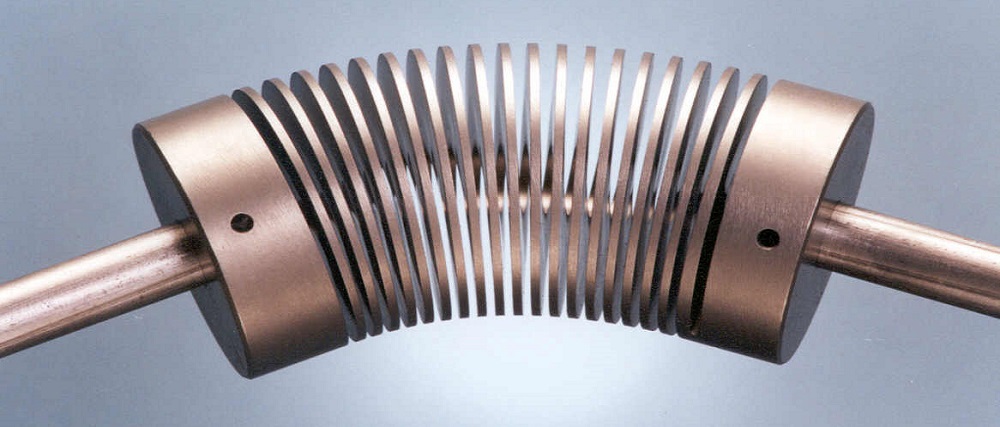
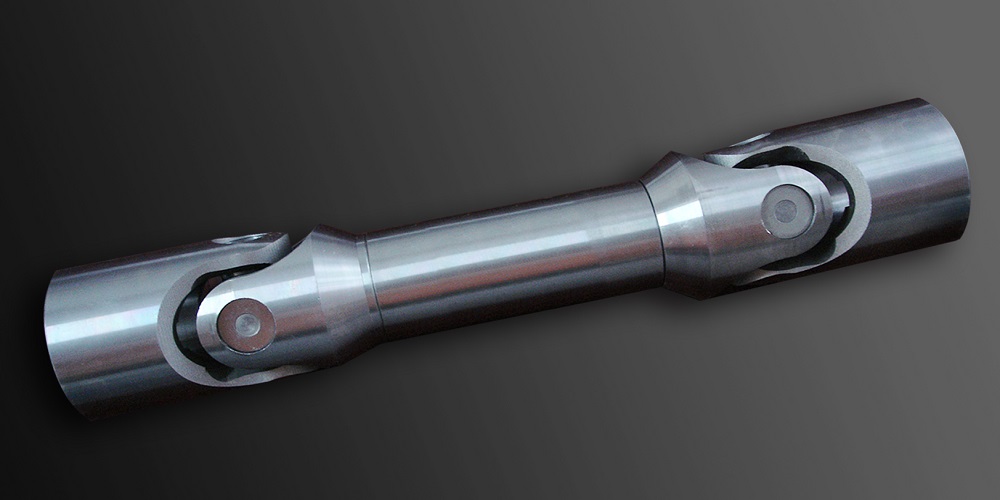


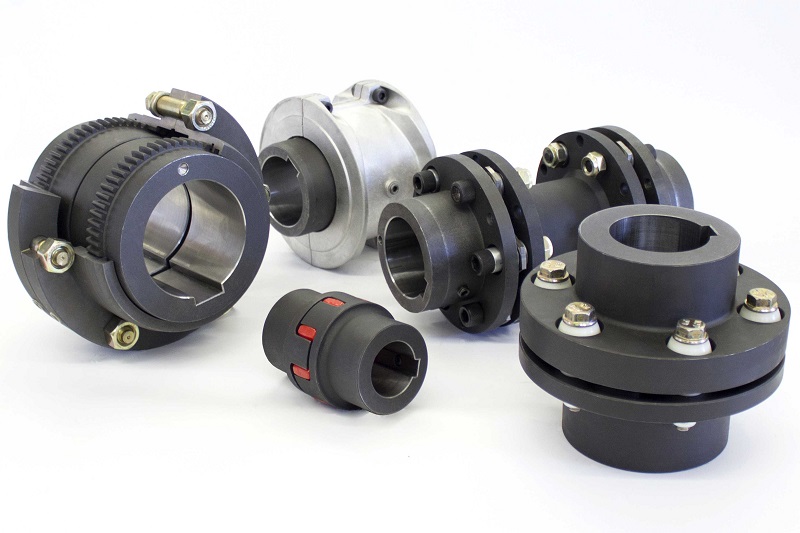
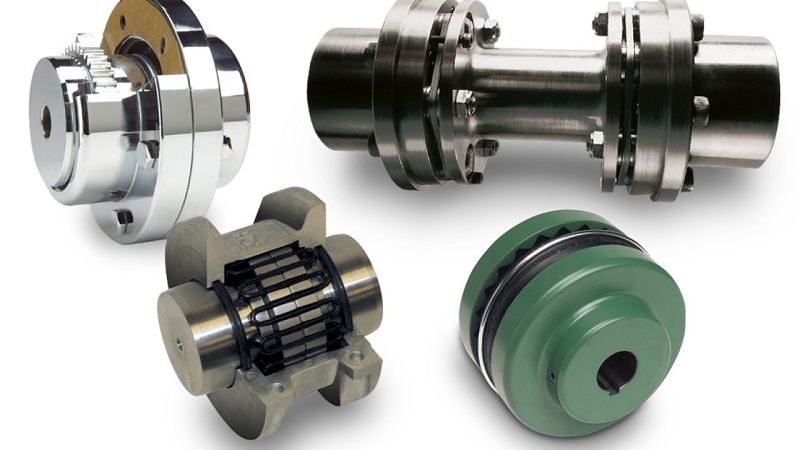
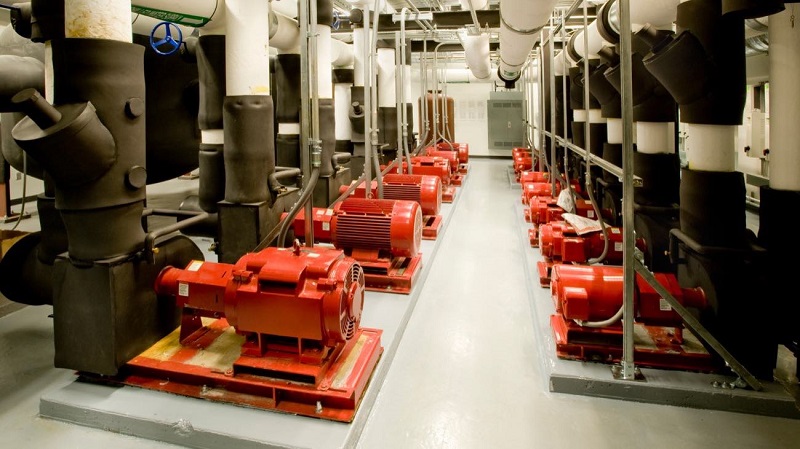


Good piece on the Types of flexible coupling. I am also running my own business with Rolling Machinery. But when I started doing research, I realised that I needed to know more about Gear Coupling, universal coupling, Straightening Machine, Reduction Gearbox, Shearing Machine and more. I enjoyed this well written article. Thank you.
We are thrilled that you loved our article. Thanks for your kind words and taking the time to have a review of our article!
Please sign up on Linquip with any further comments or suggestions you wish to share. We look forward to seeing you again!